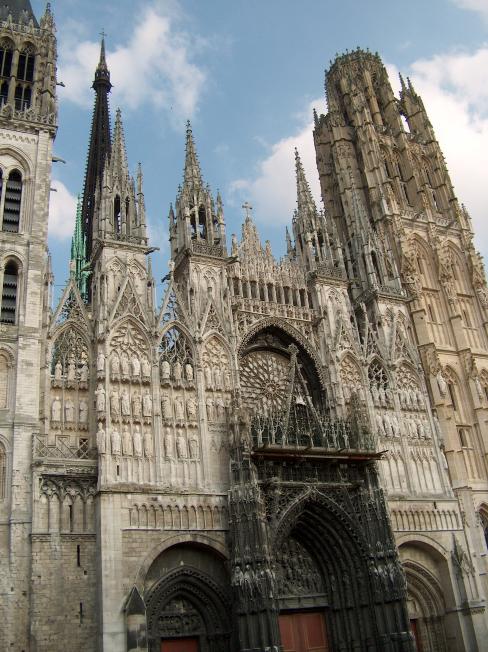|
It is important to understand the advent of square notation in relation to other developments in the twelfth and thirteenth centuries. Two important areas of change are the study of geometry and the Gothic cathedral.
 |
| Rouen Cathedral |
|
The so-called High Gothic period of cathedral building spans the twelfth and thirteenth centuries, and is especially concentrated in Paris and surrounding cities. The most famous Gothic cathedrals are those at Paris (from 1163), Reims (from 1165) and Chartres (from 1194).
For these immense and complex structures, masons increasingly preferred to draw out their plans rather than relying on memory as they had in the past. Many architects favoured the ad quadratum technique in which an entire plan was derived from a single square shape. One of the simpler illustrations of this technique is found in a manual by Mathes Roriczer published in 1486.
|
|
| Reproduced after Mathes Roriczer, Puechlein der Fialen Gerechtigkeit (1486) |
|
For further reading:
- GŁnther Binding, High Gothic: The Age of Great Cathedrals (Cologne, 2002)
- Nicola Coldstream, Medieval Architecture (Oxford, 2002)
- Nancy Wu, ed., Ad quadratum: The Practical Application of Geometry in Medieval Architecture (Aldershot, 2002)
|